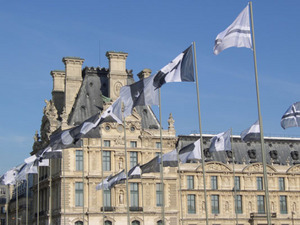This is an archive of the ArtCat Zine, 2007-2009. Please visit our new project, IDIOM.
Katy Siegel on a Globalizing Art World
Katy Siegel: Millions of Artists, and all pretty good...
6:30pm Tuesday 9 September 2008
SVA - 133/141 West 21 Street, room 101C
In the short essay The City in the Age of Touristic Reproduction, Boris Groys theorizes the emergence of the global city as a step away from the radical modern formalism of 20th century Utopian projects towards a new ideal: important cities that resemble one another not by a forfeit of local specificities but rather by their systemic reproduction and dissemination. That we may enjoy ethnic cuisine with slight variations far from the places of their historical origin is one such development Groys cites in which "far from becoming extinct, local features have in fact become global." There is a resemblance between these global urban centers without prototype or relative features of origin. The germ of these similarities may be located in the practices now common to these places: the aggressive export of local culture, freighted by mushrooming networks of electronic communication technologies and the sophistication of contemporary transport engineering.
Cultural producers, Groys goes on to suggest, are equally subject to the globalization of cultural flows, often compelled towards frequent international travel in pursuit of the facilitating institutional and economic support networks that make ambitious cultural work possible. Philosopher Steven Lukes, last week in conversation with Slavoj Žižek in New York, joked that the two of them were members of a worldwide "frequent flyers club" - a fact necessitated by the heights of their critical engagement and the dispersed support structures for such work. The kind of internationalization that propels these modes of working and travel habits equally rewards artists and intellectuals who position and market themselves as international brands.
Tomorrow evening at the School of Visual Arts, critic Katy Siegel kicks off the Fall lecture series with a talk on a slightly narrower purview of the patterns Groys describes: the globalization of the playing fields of contemporary art, and its effect on emerging and would-be art producers. From the press release:
As contemporary art increasingly becomes a global business and producers are growing in number, artists in training compete not only with peers from other BFA and MFA programs, but with artists around the world. Siegel’s talk examines how this “crowd scene” affects the individual artist. Katy Siegel is an associate professor of art history at Hunter College, a contributing editor to Artforum and an acclaimed curator.
ZINE
HOME
TIPS / COMMENTS
CATEGORIES
CONTRIBUTORS
- Greg Afinogenov
- B. Blagojevic
- Adda Birnir
- Susannah Edelbaum
- Julie Fishkin
- Paddy Johnson
- Jessica Loudis
- Christopher Reiger
- Andrew Robinson
- Peter J. Russo
- Blythe Sheldon
- S.C.Squibb
- Hrag Vartanian

